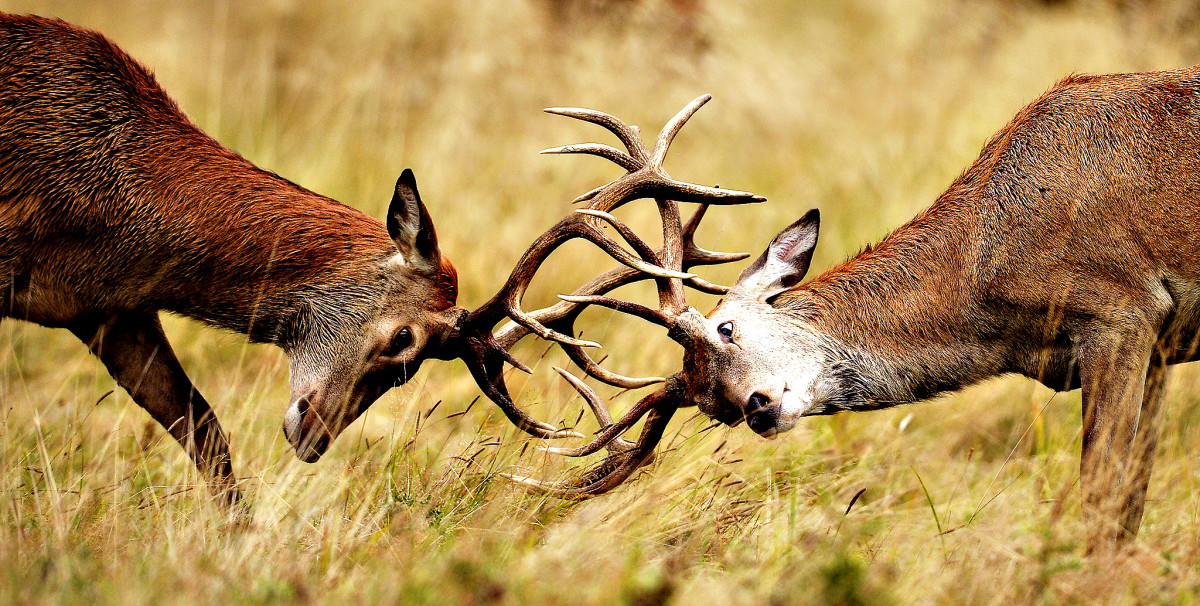
“Lovers who are young indeed, and wish to know the sort of life
That in this world you’re like to lead, ere you can say you’ve caught a wife,
Listen to the lay of one who’s had with Cupid much to do,
And love-sick once, is love-sick still, but in another point of view.”
– James Planché, The Golden Fleece
As I’ve explained in previous posts [now gone; I may put them back up some day], there are two basic principles governing sex in the natural world: female choice, and male competition. (It’s true that there are such things as female competition and male choice, but their effects seem to be far smaller.)
Female choice means that females have evolved preferences for certain characteristics in males: characteristics that either benefit her offspring genetically (strength, speed, intelligence, resistance to parasites), or materially (builds decent nests, brings food gifts, hangs around and protects/provides for a bit). She can opt for a strong, healthy male who will love her and leave her, but leave her with strong, healthy sons, who will in turn be attractive to the next generation of females (the “sexy son” hypothesis); or she can go for a male who will provide for her and her young and/or share some of the parenting, thus ensuring that more of their (slightly less attractive) offspring survive.
Male competition means that males have evolved traits useful for competing with each other: strength, aggression, cunning, a willingness to take risks. But they have also had to factor in female choice; building good nests and bringing food gifts might bring more rewards (and have fewer costs) than duffing up all your rivals, depending on the species and the environment. Pair-bonding and parenting are also valid choices, but this is highly susceptible to abuse, because of paternity uncertainty, as I mentioned last time.
Evolutionary biologists call these mating strategies. They’re not strategies in the sense that they are plans that have been consciously worked out; animals don’t teach them, or show them to their young. They’re just drives and patterns of behaviour that spontaneously appeared at some point, and were then inherited. The successful strategies, the ones that are still with us today, are the ones that have developed, over millions of years, to produce the largest number of fit, healthy offspring.
So what strategies do we see at work in modern humans? What do men and women want?
The clues point in contradictory directions. We know, for example, that height is definitely a thing for women. There isn’t a culture in the world where women prefer shorter men; taller men are far less likely to be childless than shorter ones. Human beings are around 50% taller than their ancestors from 3 million years ago, and it’s not just down to better nutrition. Since height is a good indicator of strength and of social status, this suggests that there is widespread demand among females for a strong, dominant partner.
Then there’s the enduring appeal of the “bad boy”. Russell Crowe, Russell Brand, Robert Downey Jr, Charlie Sheen, Darren fucking Day, Ashley Cole, Chris Brown: despite their inability to be faithful, or even fleetingly pleasant, none of them is likely to go without a date for long.
On the other hand, nice guys don’t do too badly for themselves. Sure, they’re not lusted after as much as bad boys, but I’m willing to bet that in most of the happy long-term heterosexual relationships you know, you’d describe the man as a reasonably good egg. And when you look at the basic mating system of the vast majority of human civilisations – monogamy – it’s tempting to conclude that on the whole, the female strategy has been to go for commitment, generosity and “niceness”, and the male strategy has been to go along with that.
But … you guessed it. Things aren’t quite so simple.
Because for men, there’s a strategy that’s better than being a bad boy and better than being a nice guy. It’s pretending to be a nice guy and actually being bad: namely, cheating.
If cheating behaviour ever came about, in a population where most of the partners were trusting, it would spread through the population like wildfire. (Until, of course, a behaviour evolved that counteracted cheating, such as mate guarding, mentioned last week.) Even if it’s eradicated completely, as soon as it appears again, it will spread like a plague.
One thing’s for certain: we’ve all got a lot of cheating men in our family tree.
Similarly, from the woman’s perspective, the choice needn’t be just between the stud who leaves you up the duff and doesn’t give you a penny and the besotted, committed wimp who devotes himself to your children. From an evolutionary point of view, the best thing to do is shag the stud and dupe the wimp into bringing up his child. Best of both worlds!
This is exactly what happens with a lot of “monogamous” species, notably birds, such as the blue fairy wren. And as we’ve seen from results of DNA fingerprinting studies, it seems it’s more common than we’d like to think in humans.
Most biologists don’t actually class humans as monogamous. They describe us as mildly polygynous, or selectively promiscuous. Helen Fisher’s theory is that we’re serial monogamists; after studying the brain chemistry of attraction, she has concluded that humans are designed to stay together for only about four years – just long enough that the child has a good chance of surviving with one parent.
The more attentive among you will have noticed that we have drifted somewhat off the point I was originally driving at: the differences between men and women. But it’s been a detour with a purpose: to illuminate some of the contrasting challenges that face males and females in the mating arena.
I hope you’ll agree, for example, that our little thought experiment goes some way towards explaining the following phenomena:
- Why it is overwhelmingly men, not women, who initiate courtship
Why so many women can’t stop dating bastards - Why coyness is virtually unheard of in men
- Why there’s no such thing as a subtly wealthy man, only a conspicuously wealthy one
- The otherwise incomprehensible popularity of Fifty Shades of Grey
- Why, now that women’s earnings are almost on a par with men’s, some women are writing about the “new scarcity” of decent marriage options
- Why men, on average, have a higher sex drive (I’m not going to get into an argument about this. It’s been proven over and over again. Let’s just say that if the female sex drive were as great as the male, we’d still be living in caves)
- Why looks matter more to men than to women (health and fertility are all they need to worry about; women have a more extensive list of requirements)
- Why women tend to prefer older men (status, ability to provide) and men to prefer younger women (fertility)
- Why twice as many men as women remain childless
- Why men take more risks
- Why women are more worried about emotional infidelity (risk of losing resources) and men are more concerned about sexual infidelity (risk of wasting resources)
- Why women’s tastes change according to the time of the month: they prefer more masculine (alpha/sexy son) faces when ovulating, and kinder, gentler faces for the remainder.
Let’s look at it from another angle. We’ve already seen how, anatomically speaking, men and women are virtually identical – except when it comes to the sex parts.
In the realm of sensation and perception, comparisons are harder, because there’s no good way of measuring them, but based on subjective reports, we seem to be cut from more or less the same cloth. There is, however, one obvious difference: the way we experience orgasm. There are huge disparities in frequency, duration and intensity (the theories as to why will have to wait for another day). So in terms of how we feel and interpret the world, men and women are highly similar … except when it comes to the sex part.
Doesn’t it make perfect sense, then, that when it comes to our behaviour, to our drives, our motives, our goals, men and women should be more or less indistinguishable … except for the sex part?
For my final exhibit, I call not on biology, or mathematics, or economics, but on some simple observations.
If men and women are so similar, why don’t we understand each other? Why are there so many thousands of books telling women how to trap a man into marriage, and telling men how to trick women into bed? Why do we find romantic comedies funny? Why are there so many man-hating women, and so many women-hating men? Why are we all – even feminists – so ready to make sweeping generalisations about the opposite sex (“All men are rapists”)? Why is gender such an integral part of our identity (anthropological studies indicate that it is among the most important of our ways of defining ourselves, above national identity, ethnic identity, religious identity and occupational identity)? Why do men tend to prefer more feminine women and women to prefer more masculine men, ie types as unlike themselves as possible?
We’re not brought up segregated from our opposite-sex siblings. We’re not taught different syllabuses. We’re not exposed to different TV shows or newspapers (true, many choose to consume gender-specific material – lads’ mags, chick flicks. But that’s their choice, not something they’re railroaded into). And yet, when it comes to matters of the heart (and groin), we still don’t have the faintest clue how the opposite sex operates.
Of course we’re different. There’s a yawning chasm between us. Which is why it feels so magical when, by whatever means, and for however short a time, we manage to bridge it. And the differences are not learned, they’re hardwired. They’re clearly and firmly rooted in our evolutionary past.
The problem I think most feminists have with evolutionary psychology is not with the information per se, but with how it might be used. They’re concerned, perhaps unsurprisingly, about the agenda of those carrying out and quoting the research.
But for most of us, it’s not about returning to a world where men can pinch women’s bottoms with impunity. It’s not about dragging women out of boardrooms and throwing them back in the kitchen. It’s not about banning women from map-reading and men from verbal communication.
My concerns, at least, are far pettier. I started my first blog because I wanted to figure out where I went so spectacularly wrong. I wanted to know why women I thought attainable spurned me, and women I thought unattainable spooned me. I wanted to know how a woman could choose a misogynist ratbag over a pretty decent guy, how a woman could change her mind completely overnight, and how the hell pouring a pint of beer over a woman’s head could transform someone from scum of the earth into cock of the walk. I wanted to know what, if anything, I could do to maximise my chances of being held again. That’s all.

